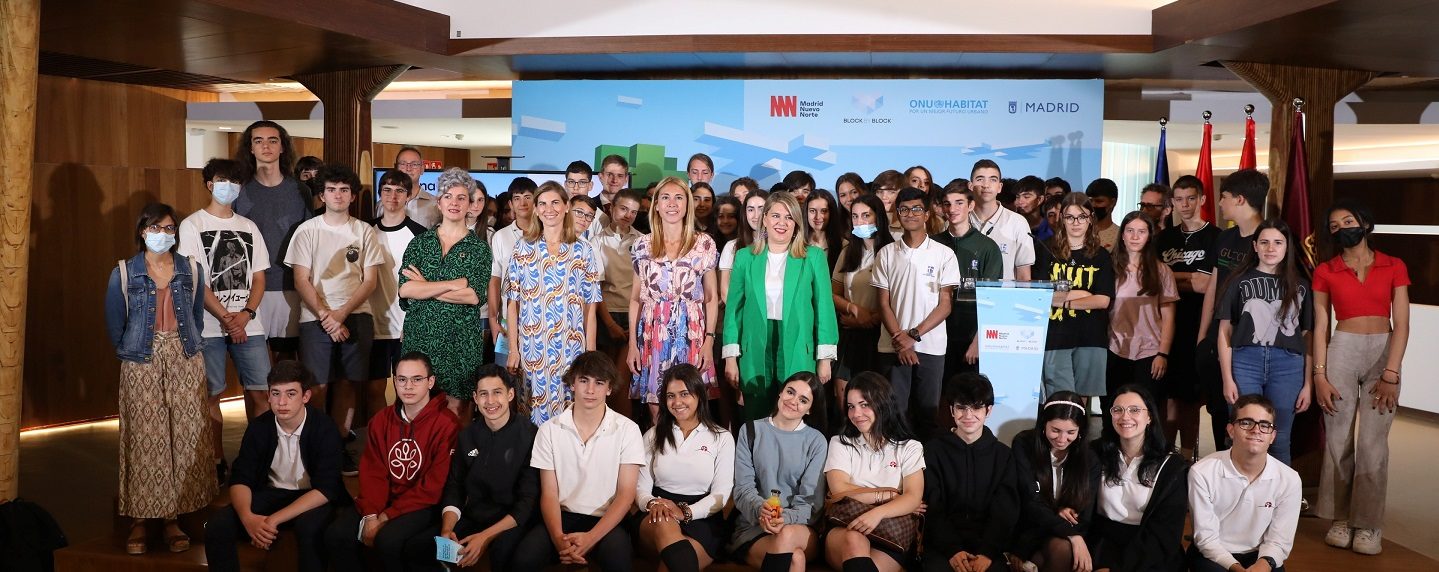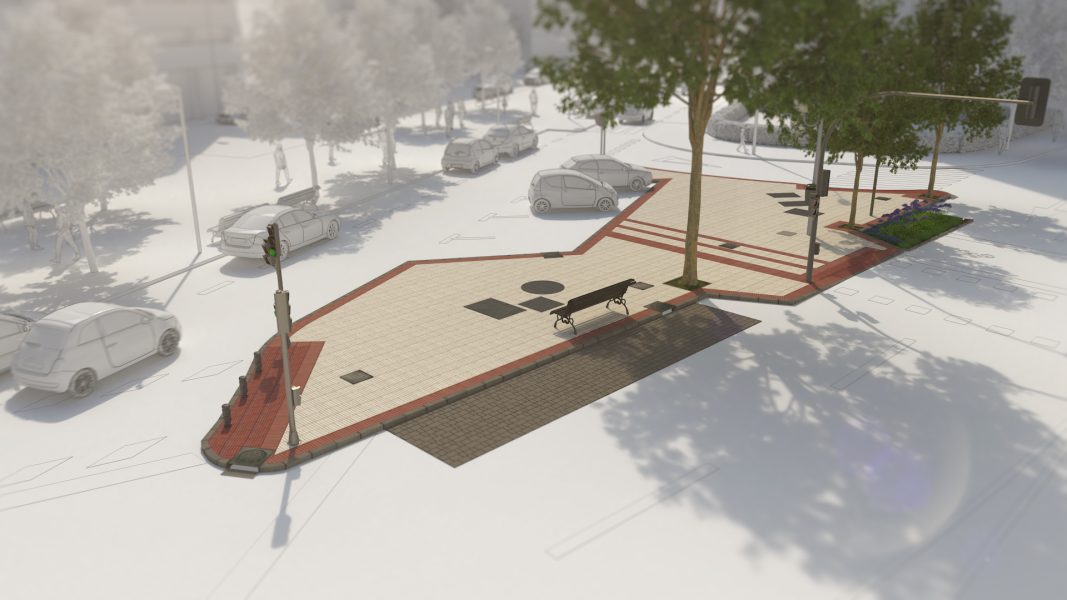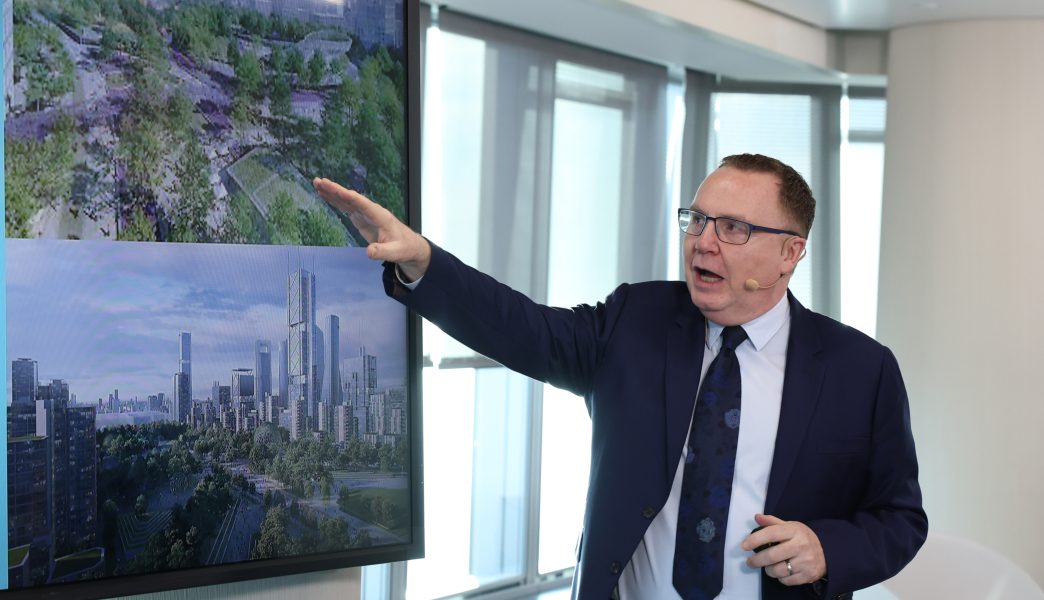for Madrid Nuevo Norte
Over the past year, over 200 students aged between 12 and 16, from 10 schools across Madrid, have worked with the video game Minecraft to imagine their perfect version of this large green space in the north of Spain’s capital.
The report’s conclusions were presented this morning at a function, where speeches were given by Silvia Saavedra, the councillor for the delegated area of Regional Coordination, Transparency and Citizen Engagement at Madrid City Hall, the head of the Spanish UN-Habitat office, Carmen Sánchez-Miranda, and the head of Social Engagement at DCN, Gema del Pozo.

A vast park that prioritises environmental sustainability, is 100% accessible and inclusive, is well-lit and includes different spaces for sports and leisure. This is what Madrid’s young citizens imagine for Madrid Nuevo Norte’s great Central Park: a new green space to be created over the covered tracks of Chamartín-Clara Campoamor station which, comprising a surface area of 13 hectares, will become one of the city’s iconic spaces.
These are the conclusions drawn from the report prepared by UN-Habitat, which compiles the results obtained from the project carried out by Distrito Castellana Norte, in collaboration with Madrid City Hall and under the UN-Habitat programme Block by Block. Over the past year, a total of 237 students aged between 12 and 16, from 10 schools across Madrid, used the video game Minecraft to design their ideal version of this large green space in the north of the city.
The report was presented today at a function, where speeches were given by Silvia Saavedra, the councillor for the delegated area of Regional Coordination, Transparency and Citizen Engagement at Madrid City Hall, the head of the Spanish UN-Habitat office, Carmen Sánchez-Miranda, and the head of Social Engagement at DCN, Gema del Pozo.
More than just a video game
The project “Imagina el Gran Parque de MNN” (“Imagine MNN’s Great Park”) has come to exemplify the importance of participatory processes, both past and present, in developing and designing Madrid Nuevo Norte. On this occasion, students were given a voice through the use of technology familiar to them, allowing them to feel involved in the project and their city’s development.
The conclusions of the report prepared by UN-Habitat show that young people’s concerns lie in spaces being accessible, sustainable and safe. The projects, therefore, unanimously highlight a preference for a green space with trees and paths for walking; over a third of project participants were also innovative in their vision, incorporating a renewable energy supply through solar panels in the surrounding area, which would serve to provide energy to most of the services offered by the park, in addition to the lighting on its paths.
Sustainable mobility, with cycle paths connecting the space, and a firm commitment to the park being 100% accessible and inclusive are some of the characteristics chosen almost unanimously by the students. Also very popular was the idea of designated areas for leisure and sports, with participants specifying that not only traditional sports, such as football and basketball, should be catered for, but also more current, minority and/or urban sports, such as volleyball, skateboarding and parkour.
Lastly, it is important to note that the submitted projects emphasised the importance of guaranteeing safety in the park; they showed an understanding that the more people make use of a public space, and the more citizens are encouraged to visit the park at different times of the day, the safer everyone feels. We can say, therefore, that the participants’ work reflects a great Central Park with a fun atmosphere, good lighting and different areas and paths.
Over a year of work
The project, promoted by DCN in collaboration with UN-Habitat and Madrid City Hall, was implemented over the past year, with 237 students from 10 schools in 8 of Madrid’s 21 districts, aged between 12 and 16, designing their own ideas for a park; by doing so, they showed their needs, expectations and concerns where using public space was concerned.
As covered in the report, the initiative allowed for an increase in young people’s interest and participation in urban planning and design, devising a park adapted not only to their own needs, but also to those of other segments of society and ages. Participants saw this project as an opportunity to feel heard and for their reflections on the city and on public space to be considered, through their designs of Madrid Nuevo Norte’s great Central Park. They also deemed it useful for boosting creativity, dialogue, collaboration and negotiation between different groups.
Silvia Saavedra, who closed the event, underlined her satisfaction as the city’s Citizen Engagement councillor with this project being carried out: “it reaffirms the importance of citizen engagement in developing public policy, linked to something as inherent to citizens’ lives as urban planning, even amongst young people”, she stated. She also added that urban spaces must be designed “with an awareness of what citizens think, without overlooking the opportunities provided to us by new technology, such as the use of Minecraft in this case, which young people know inside-out and which has proved decisive in familiarising them with the project.”







